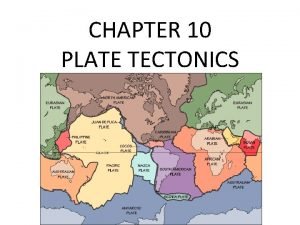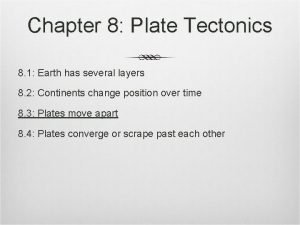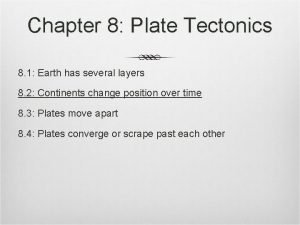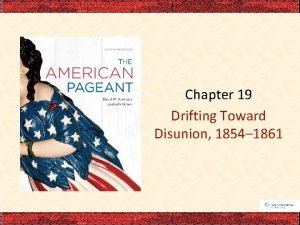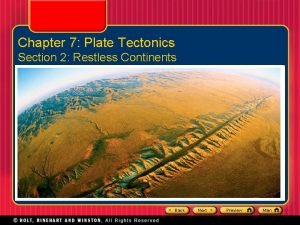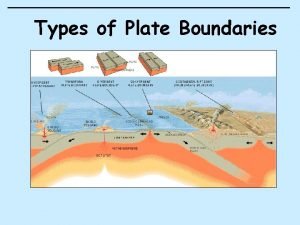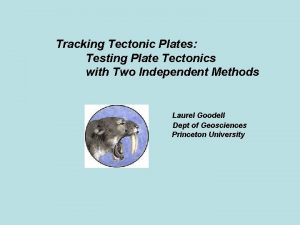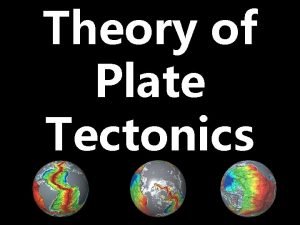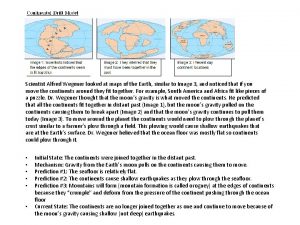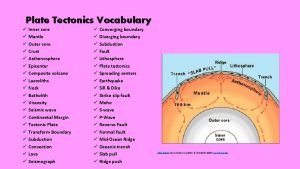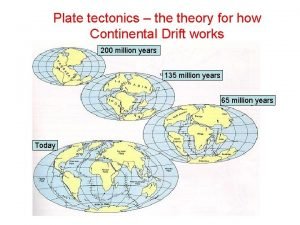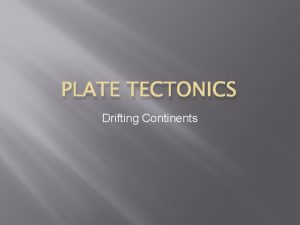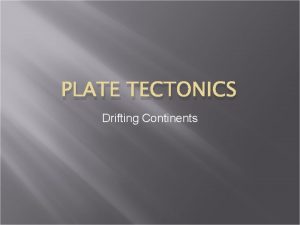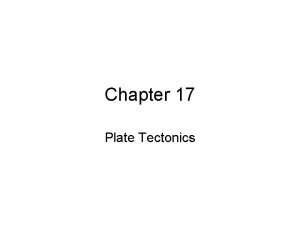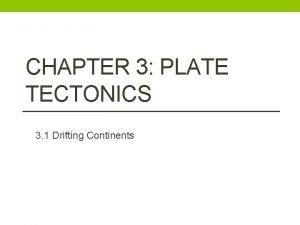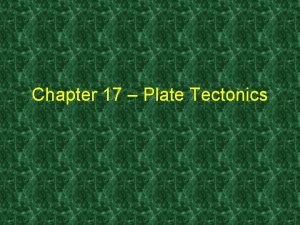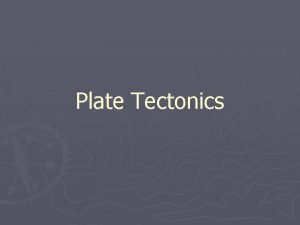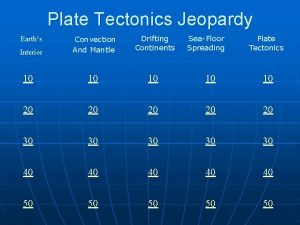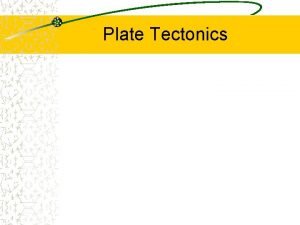Chapter One Plate Tectonics Section 3 Drifting Continents













- Slides: 13

Chapter One: Plate Tectonics Section 3: Drifting Continents Pages 28 -32

Convection Review What is convection? p The transfer of heat by movements of a heated fluid. Where is it happening? p In our atmosphere; it is responsible for the heating of our troposphere. p It is happening in a pot of boiling water.

Convection Currents Where is convection happening inside of our Earth? p Like boiling water in a pot, Earth’s mantle responds to heat. p Heat from Earth’s mantle and core, cause convection currents to form in the asthenosphere.

The Theory of Continental Drift In 1910, a young German scientist named Alfred Wegener became curious about the relationship of the continents. p He formed a hypothesis saying that all continents had once been joined together in a single land mass and have since drifted apart. p

The Theory of Continental Drift o o Pangaea = name for the supercontinent, means “all lands”. Long, long ago, Pangaea began to break apart. The pieces slowly moved toward their present day location. Wegener’s idea that the continents slowly moved over Earth’s surface is known as continental drift. Hmmmm… what caused these pieces to break apart? https: //www. youtube. com/watch? v=zocutif 0 c. QY

Wegener’s Puzzling Evidence You will need: o scissors, 5 colored pencils, paper, glue o Map of “The World Today” o Key “Fossils” o Puzzle pieces o A partner at your table FOLLOW the 4 directions above the fossil key

Puzzling Evidence o o o Glue your puzzle pieces onto the construction paper. Answer this question: What evidence did you find that supports Alfred Wegener’s theory of Continental Drift? Write your names on paper

Continental Drift Evidence Continental Drift Landforms Fossils Climate

Evidence from Landforms o o o The puzzle like fit. A mountain range in South Africa lines up with a mountain range in Argentina. European coal fields match with similar coal fields in North America.

Evidence from Fossils o o o Fossil = any trace of an ancient organism that has been preserved in rock. Fossils of reptiles Mesosaurus and Lystrosaurus have been found in places separated by oceans. They can’t swim that far in salty water! Glossopteris, a fern like plant, has been found on 5 continents.

Evidence from Climate o o o Tropical plant fossils found in polar regions… Deep scratches on rocks show that glaciers once covered South Africa. . . As a continent moves toward the equator, its climate becomes warmer. As a continent moves towards the poles, its climate becomes colder.

Theory Rejected n Unfortunately, Wegener could not provide a satisfactory explanation for the force that pushes or pulls the continents. n Most geologists rejected his idea. n From the 1920’s to the 1960’s, most scientists paid little attention to the idea of continental drift.

Words Worth Knowing (ISN #44) n Convection currents n Pangaea n Continental drift n Fossil n Alfred Wegener
 Chapter 10 plate tectonics
Chapter 10 plate tectonics Chapter 8 plate tectonics
Chapter 8 plate tectonics Chapter 8 plate tectonics
Chapter 8 plate tectonics Chapter 19 drifting toward disunion
Chapter 19 drifting toward disunion Chapter 7 section 2 restless continents answer key
Chapter 7 section 2 restless continents answer key Plate tectonics vs continental drift
Plate tectonics vs continental drift Plate boundaries types
Plate boundaries types Evidence of the theory of plate tectonics
Evidence of the theory of plate tectonics The plate tectonics theory states that
The plate tectonics theory states that Compare continental drift and plate tectonics
Compare continental drift and plate tectonics Compare continental drift and plate tectonics
Compare continental drift and plate tectonics Webquest plate tectonics
Webquest plate tectonics Plate tectonics vocabulary worksheet
Plate tectonics vocabulary worksheet Magnetic reversals
Magnetic reversals
